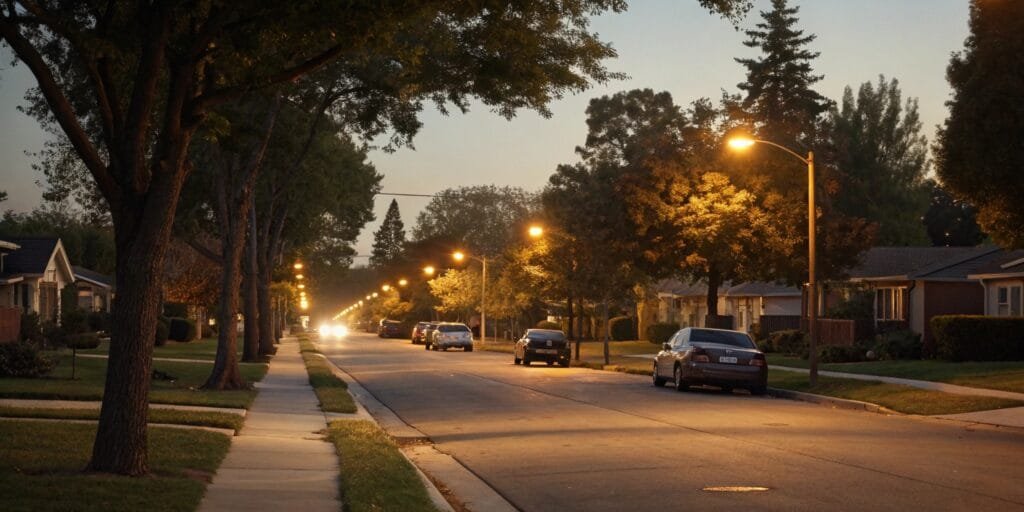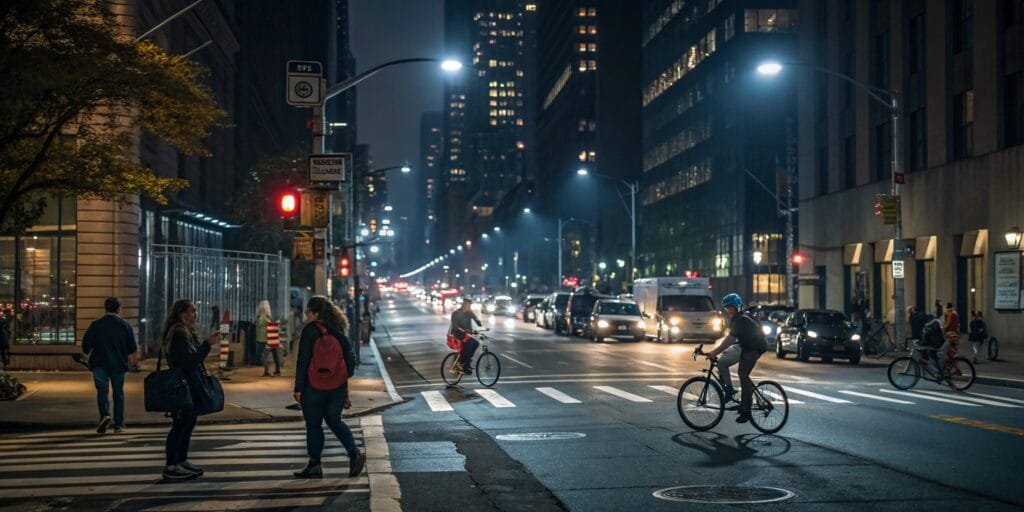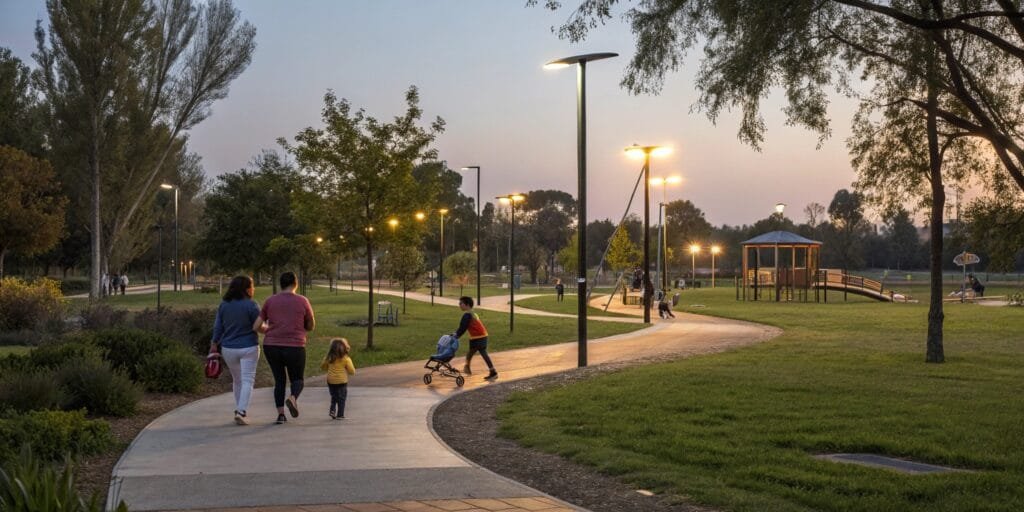Street lighting is a fundamental part of modern urban infrastructure, ensuring safety, efficiency, and improved quality of life. With advancements in LED technology, street lights now offer even greater benefits.
Street lights improve visibility, enhance security, and contribute to energy efficiency. LED street lights, in particular, provide cost savings, environmental benefits, and superior illumination compared to traditional lighting solutions.
Let’s explore how street lights contribute to safer, smarter, and more sustainable cities.
Importance of Street Lights
Street lights serve multiple functions beyond simple illumination.
Proper street lighting improves security, enhances urban aesthetics, and supports nighttime activities.
1. Safety & Security
- Reduces nighttime accidents by improving visibility for drivers and pedestrians.
- Helps deter criminal activities in well-lit public spaces.
2. Urban Aesthetics
- Enhances the beauty of streets, parks, and public areas.
- Creates a welcoming environment for businesses and communities.
3. Functionality
- Enables outdoor activities such as walking, biking, and social events.
- Supports 24/7 business operations in commercial areas.
4. Traffic Management
- Guides drivers with clear road visibility.
- Reduces traffic congestion by improving flow at intersections.
Advantages of LED Street Lights
LED street lights have revolutionized outdoor lighting with their efficiency and durability.
LED technology offers lower energy consumption, reduced maintenance costs, and improved lighting quality.
1. Energy Efficiency
Traditional street lights consume excessive electricity, leading to high energy bills.
LED street lights use up to 80% less energy than HPS and mercury vapor lamps, significantly reducing electricity costs.
| Light Type | Energy Consumption | Efficiency |
|---|---|---|
| LED | Low | High |
| HPS | High | Moderate |
| Mercury Vapor | Very High | Low |
2. Cost Savings
While LED street lights have a higher initial cost, they offer long-term financial benefits.
- Lower electricity bills due to energy efficiency.
- Reduced maintenance costs thanks to longer lifespan.
- Fewer replacements result in long-term savings.
3. Longevity and Durability
LEDs last significantly longer than traditional street lights.
With lifespans of up to 100,000 hours, LED street lights outperform HPS, metal halide, and fluorescent alternatives.
| Light Type | Lifespan |
|---|---|
| LED | 50,000 - 100,000 hours |
| HPS | 10,000 - 24,000 hours |
| Fluorescent | 8,000 - 15,000 hours |
LEDs are also resistant to vibrations, extreme weather, and impact, making them ideal for outdoor applications.
4. Environmental Benefits
Traditional street lights contain hazardous chemicals and consume large amounts of energy.
LED street lights are eco-friendly, reducing carbon emissions and minimizing waste.
- Mercury-free construction prevents toxic waste.
- Lower CO₂ emissions help combat climate change.
- Recyclable components reduce environmental impact.
5. Enhanced Safety and Security
Street lights play a direct role in accident prevention and crime reduction.
LED street lights provide bright, uniform illumination, improving visibility for both pedestrians and drivers.
- Better visibility helps drivers identify road hazards earlier.
- Lower crime rates in well-lit areas compared to dimly lit streets.
6. Improved Visibility and Color Rendering
LEDs have a high Color Rendering Index (CRI), making colors appear more natural and distinct.
| Light Type | CRI | Visibility Impact |
|---|---|---|
| LED | 70-90 | Clear, natural lighting |
| HPS | 20-30 | Yellowish, low visibility |
| MV | 40-50 | Moderate, but less efficient |
Better color distinction improves nighttime navigation and enhances security footage from surveillance cameras.
7. Reduced Light Pollution
Excessive street lighting contributes to light pollution, affecting the night sky.
LED street lights reduce unnecessary glare and direct light where it’s needed.
- Directional lighting prevents wasted upward light.
- Dark Sky Compliance ensures minimal disruption to the environment.
8. Low Maintenance & Reliability
LED street lights require minimal maintenance, saving both time and labor costs.
- Fewer replacements due to extended lifespan.
- Weather-resistant design ensures stable performance in extreme conditions.
- Smart lighting integration allows for remote monitoring and automatic adjustments.
Different Applications of LED Street Lights
LED street lights are widely used in various settings, improving safety and efficiency.
From highways to parks, LED street lights enhance visibility and security in both urban and rural areas.
1. Urban and Residential Areas
- Provides consistent lighting for neighborhood streets and pedestrian zones.
- Enhances security in suburban and city environments.
2. Highways & Main Roads
- Improves visibility for drivers traveling at high speeds.
- Reduces accident risks by illuminating curves and intersections.
3. Parking Lots & Commercial Spaces
- Ensures safety for shoppers and employees at night.
- Reduces business costs through energy-efficient lighting solutions.
4. Parks, Public Spaces & Recreational Areas
- Extends usability of parks, playgrounds, and walking trails at night.
- Creates a safe, welcoming environment in community spaces.
Conclusion
Street lights are essential for modern cities, enhancing safety, aesthetics, and functionality. The shift to LED street lighting further improves energy efficiency, cost savings, and environmental sustainability.
By adopting LED street lights, municipalities and businesses can reduce electricity costs, lower carbon emissions, and create safer, well-lit public spaces.
As cities move toward smart, sustainable infrastructure, LED street lighting remains a key element in urban development.





